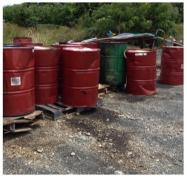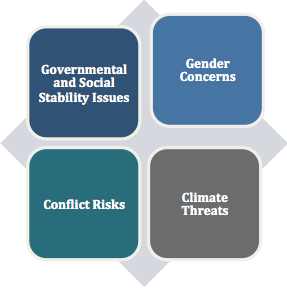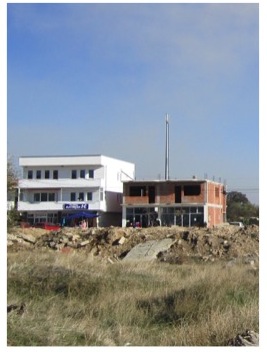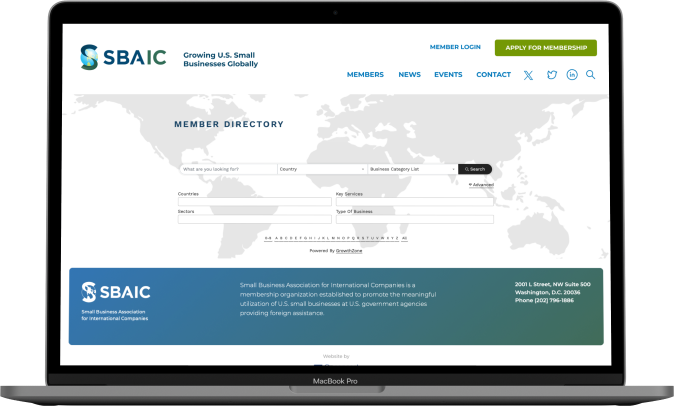Obbagy Consulting provides USAID and DCHA with technical assistance to develop risk based response strategies in countries that are vulnerable to conflict. The assistance focuses on developing a prioritized set of actions to mitigate environmental and social impacts that may contribute to further instability and decreased resiliency in the region. The approach was developed based on environmental assessment work undertaken for USAID in Haiti, Kosovo, and Liberia.
 As conflict deepens between two developing countries, both environmental and social stability has the potential to be significantly impacted, affecting years of development efforts across the entire region. As the first order of business, donor organizations and the private sector marshal the resources to initiate a comprehensive set of humanitarian relief actions.
As conflict deepens between two developing countries, both environmental and social stability has the potential to be significantly impacted, affecting years of development efforts across the entire region. As the first order of business, donor organizations and the private sector marshal the resources to initiate a comprehensive set of humanitarian relief actions.
Since environmental and social impacts tend to be interconnected as depicted in Figure 1, response activities, at a minimum, typically include implementing measures to reduce migration pressures among disadvantaged groups, providing financial aid to bolster local business enterprises, and distributing water and medicines to alleviate human suffering.

Figure 1: Environmental and Social Impact Connectivity
As we all know and acknowledge, it is becoming increasingly more difficult to launch and implement a comprehensive set of activities designed to help mitigate environmental and social impacts associated with deteriorating conditions in conflict zones. Simply stated, as the number of conflict zones increase across the globe, the resources Donor’s utilize to promptly and effectively address the range of emerging environmental and social impacts become strained.
Although this may seem incongruent with social responsibility norms, what emerges from conversations with USAID field practitioners and other professionals is a potential pathway forward. Humanitarian relief activities can be prioritized to address emerging environmental and social impacts in conflict areas so as to achieve measurable results and long-term stability.
Although the concept sounds plausible, how do you prioritize actions when the needs are so overwhelming and so apparent to relief workers and donors? One approach is to augment field observations and agency experience with a community based environmental and social impact composite to help stage response actions.
Environmental practitioners suggest that the best impact composites are those developed in concert with local stakeholders. They have an invaluable intrinsic perspective as to the nature of emerging threats, the way things really get done at the community level, and the types of relationships that are needed for support to help ensure long-term prosperity.
 Moreover, tapping local perspectives has roots in the widely held belief that engaging the community at the outset, in any type of development intervention, provides the foundation for building support, establishing commitment, and making the mitigation measures a priority among community members.
Moreover, tapping local perspectives has roots in the widely held belief that engaging the community at the outset, in any type of development intervention, provides the foundation for building support, establishing commitment, and making the mitigation measures a priority among community members.
A community-based composite is derived from local stakeholder input and represents a listing of environmental and social impacts ranked in terms of their significance. The impacts can exist, or most likely will emerge in conflict areas. Significance is a function of how local communities perceive the effects of the impacts on their lives and the estimated timeframes for occurrence.
Through conversations with local or regional stakeholders, important data can be obtained to inform environmental and social impact characterizations. For example, the consultation process might yield information such as:
- The volume of goods and services purchased from local women-owned enterprises.
- The criteria for determining low, medium, or high impacts. That is, are the consequences of environmental and social impacts perceived to be significant and will these impacts occur immediately or over the long term.
- Data gaps that need to be addressed to more fully understand the relationship among climate threats, conflict risks, gender concerns, and stability issues.
- The types of events, which disrupt efforts to strengthen civil society and participation of disadvantaged groups in high climate change-conflict risk countries.
- Local sources of water, food, agricultural products, and other business functions in the conflict zones.
- Local insight regarding timeframes for impact occurrence and the relative importance in terms of the ongoing functioning of affected communities.
Figure 2 illustrates how the data from these discussions can be summarized to help inform the prioritization of response efforts to address emerging environmental and social impacts in conflict areas.
For example, as a hypothetical, the communities surveyed in the conflict zones identified six potential environmental and social impacts. Based on consensus, the communities agreed to rank the impacts as either Tier 1, 2 or 3 (with 3 being the most critical) reflecting the perceived severity and timeframe for occurrence. In this scenario, the affected communities ranked reduced water availability as Tier 3 or one of the most important impacts to be addressed in the short term. Tier 2 environmental and social impacts were perceived by the communities to be the next set of issues that needed to be address, while loss of school structures was characterized as Tier 1. Equally important in the ranking is the rationale behind the significance attributed to the impact. For example, maybe community members thought that the loss of school structures could be addressed later since education can be undertaken in other locations for a finite period of time. This type of qualitative data helps calibrate the ranking of impacts as perceived by local constituencies.

Figure 2: Illustrative Example of Community Ranked Environmental and Social Impacts
The collective feedback from disparate community sources may also point out certain perceptions that need to be addressed or changed, while also identifying better ways the donor organizations can work with the local communities. Previously unrecognized mutual interests might also exist among the various groups in the geographic area, suggesting that new opportunities geared towards strengthening local response activities might be available. Community members might suggest a highly skilled, yet not well-known, local group to assist with implementing mitigation activities focused on improved land management practices that, in turn, help increase forest regrowth.
The range of strategic directions revealed could potentially lead to mitigating impacts by building coalitions composed of diverse groups of actors or creating alliances among constituencies who don’t usually work together. It might also mean that complex challenges need interconnected solutions to scale programs for impact reduction.
Ultimately, the analysis of environmental and social impact composite made in concert with field data and agency experience will result in the process for building and enhancing community relationships, as well as establishing a set of actionable items to decrease the difference between expected outcomes and actual outcomes.
If leadership and accountability in the world includes obtaining feedback, understanding community perspectives, and communicating honestly and candidly about potential impacts and benefits, then leveraging the communication connection to the community makes eminent sense as part of disaster and humanitarian responses.







